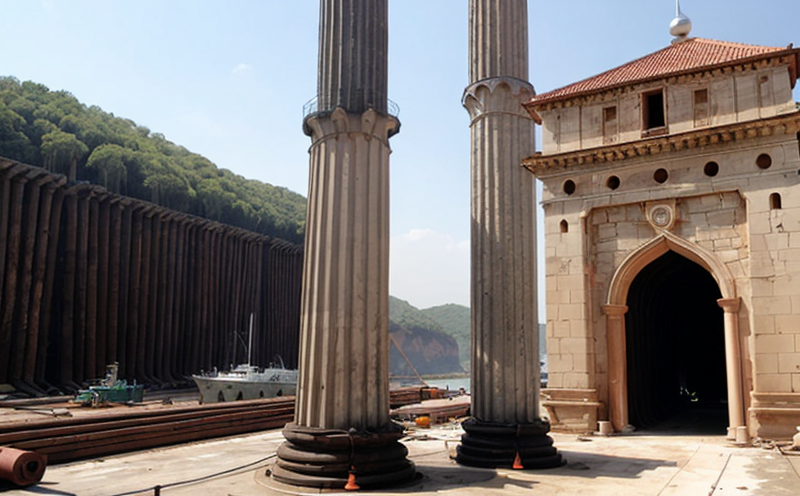Column and tower vessel inspection
In the industrial sector, column and tower vessels are critical components in chemical processing, refining, pharmaceutical manufacturing, and other industries. These vessels play a crucial role in storing hazardous materials or handling volatile substances under various operating conditions. Given their importance, thorough inspections are essential to ensure compliance with safety regulations and industry standards.
The inspection of column and tower vessels involves a systematic evaluation of structural integrity and operational performance. This process encompasses multiple phases including preparation, examination, documentation, and reporting. The scope typically includes non-destructive testing (NDT) methods such as ultrasonic testing, radiographic testing, eddy current testing, and visual inspections.
Compliance with international standards is paramount in this field. For instance, the ASME Section VIII Division 1 & 2 provide guidelines for the design and construction of pressure vessels. Similarly, EN 1591:2017 sets out requirements for the inspection, testing and monitoring of industrial pressure equipment.
The methodology involves several key steps. Firstly, a comprehensive assessment is conducted to determine the type and extent of inspections required based on vessel history, service conditions, and regulatory requirements. Secondly, a detailed examination using advanced NDT techniques is carried out by skilled personnel equipped with state-of-the-art diagnostic tools. Thirdly, findings are meticulously documented along with recommendations for any necessary repairs or maintenance actions.
The inspection process must adhere to stringent quality assurance protocols ensuring reliability of results. Rigorous calibration procedures ensure accuracy and precision during testing. Moreover, continuous training programs keep inspectors updated on latest technologies and best practices.
Properly executed column and tower vessel inspections not only enhance operational safety but also extend equipment lifespan significantly reducing maintenance costs over time. By adhering strictly to prescribed standards and employing expert teams equipped with appropriate technology, these inspections contribute substantially towards maintaining high levels of industrial hygiene and environmental responsibility.
Scope and Methodology
The scope of column and tower vessel inspection encompasses a wide array of activities aimed at ensuring safe operation of these vital assets. This includes routine visual examinations supplemented by more sophisticated non-destructive testing (NDT) methods designed to detect potential flaws or defects within the structure.
Visual inspections form part of every inspection regime as they provide immediate feedback regarding visible signs of wear and tear, corrosion, or other anomalies on external surfaces. These observations help identify areas needing closer scrutiny during subsequent stages of the inspection process.
In addition to visual checks, ultrasonic testing (UT) is commonly employed for detecting internal flaws such as cracks or porosity that might not be apparent through simple observation alone. Radiographic testing (RT), another widely used NDT technique, uses X-rays or gamma rays to produce images of internal structures revealing hidden defects.
Eddy current testing (ET) complements these approaches by utilizing electromagnetic fields to assess surface and near-surface conditions effectively identifying areas susceptible to corrosion or material degradation. All findings are recorded comprehensively including detailed descriptions of observed anomalies along with their respective locations and severity levels.
Each stage of the inspection process is meticulously documented ensuring traceability throughout all subsequent stages until final report generation. Compliance with relevant international standards such as ASME Section VIII Division 1 & 2, EN 1591:2017 further enhances credibility and reliability of inspection outcomes.
Benefits
The benefits of column and tower vessel inspections extend far beyond mere compliance with regulatory requirements. Regular inspections significantly enhance overall safety levels within industrial facilities minimizing risks associated with accidental releases or catastrophic failures.
By identifying early signs of deterioration, potential hazards can be addressed promptly preventing costly downtime or even worse accidents. Additionally, extended equipment lifespans result in reduced maintenance expenditures contributing to long-term cost savings for organizations.
From an environmental perspective, these inspections play a crucial role in minimizing emissions and waste generation by ensuring efficient operations leading to lower energy consumption and resource utilization. Compliance with stringent quality assurance protocols ensures accurate identification of any issues thus fostering trust among stakeholders including clients, regulatory bodies, and the general public.
Environmental and Sustainability Contributions
The impact of column and tower vessel inspections on environmental sustainability cannot be overstated. By identifying and rectifying defects early on through rigorous inspection processes, organizations contribute positively towards reducing their carbon footprint and promoting sustainable practices.
Efficient operations lead to decreased energy consumption thereby lowering greenhouse gas emissions associated with industrial activities. Moreover, preventing accidental leaks or spills helps protect local ecosystems from contamination ensuring ecological balance is maintained.
Compliance with international standards like ASME Section VIII Division 1 & 2 and EN 1591:2017 underscores the commitment of these inspections towards promoting sustainable development goals. These frameworks emphasize not only safety but also environmental responsibility encouraging responsible stewardship of resources.





